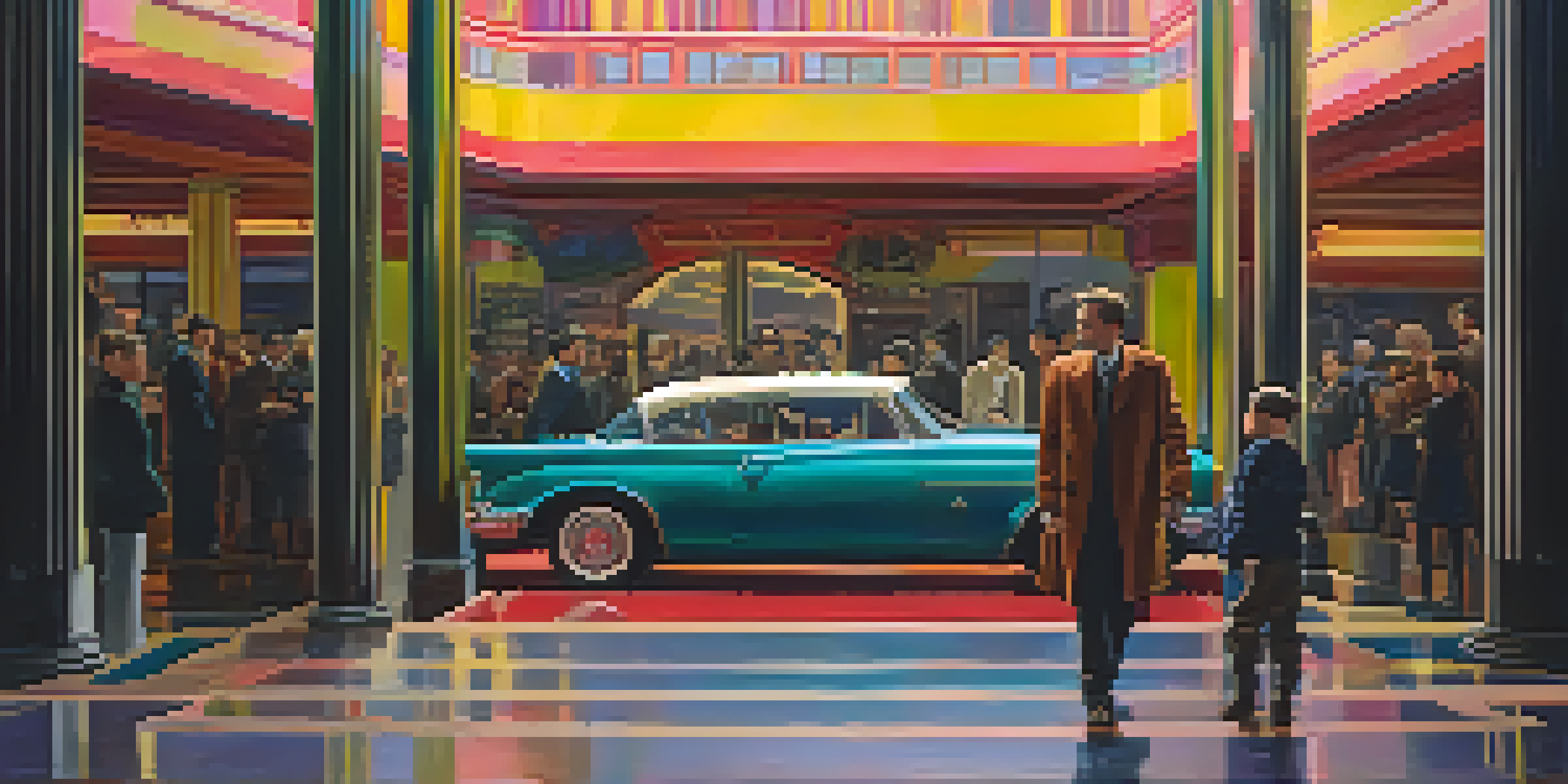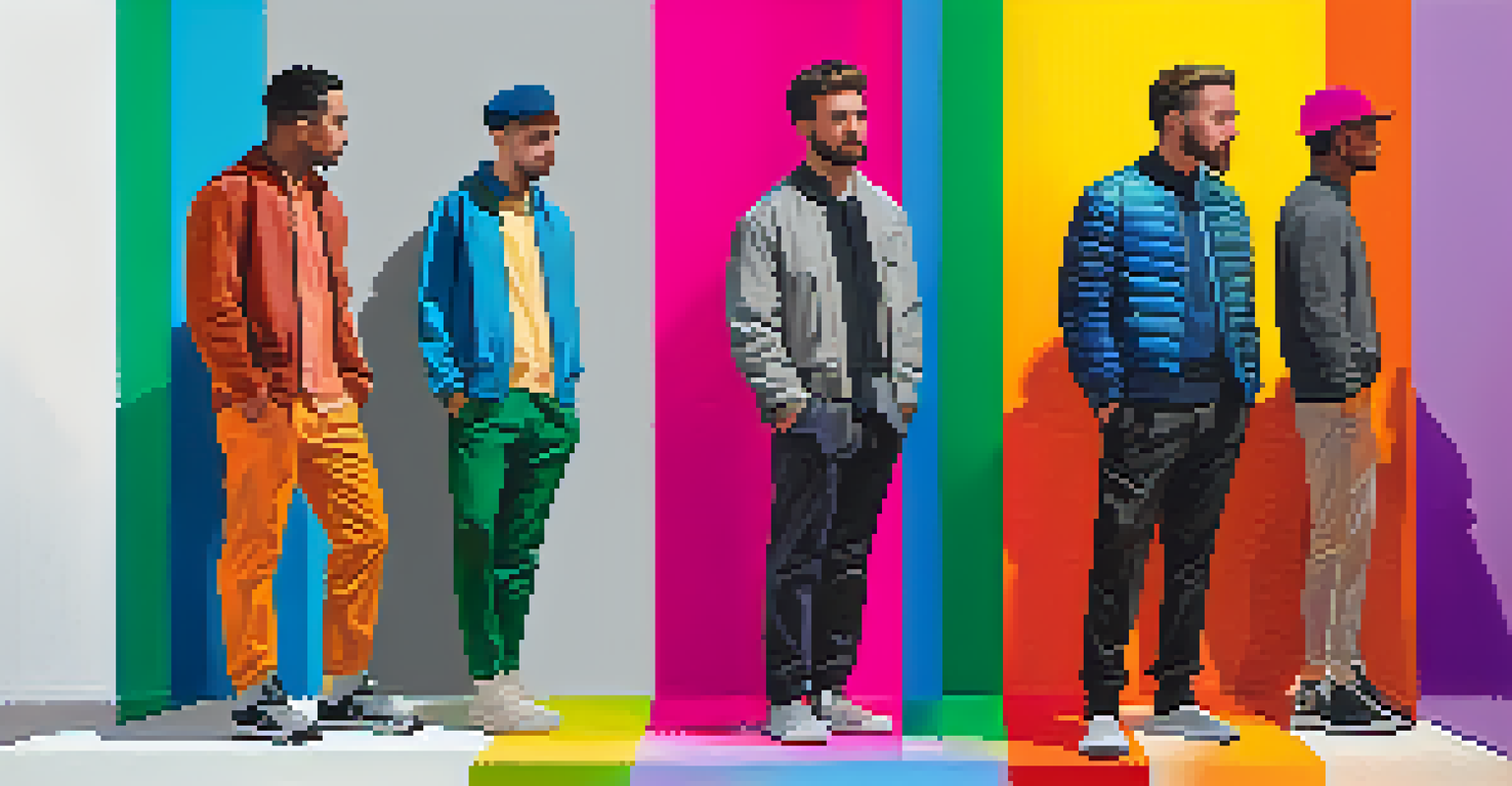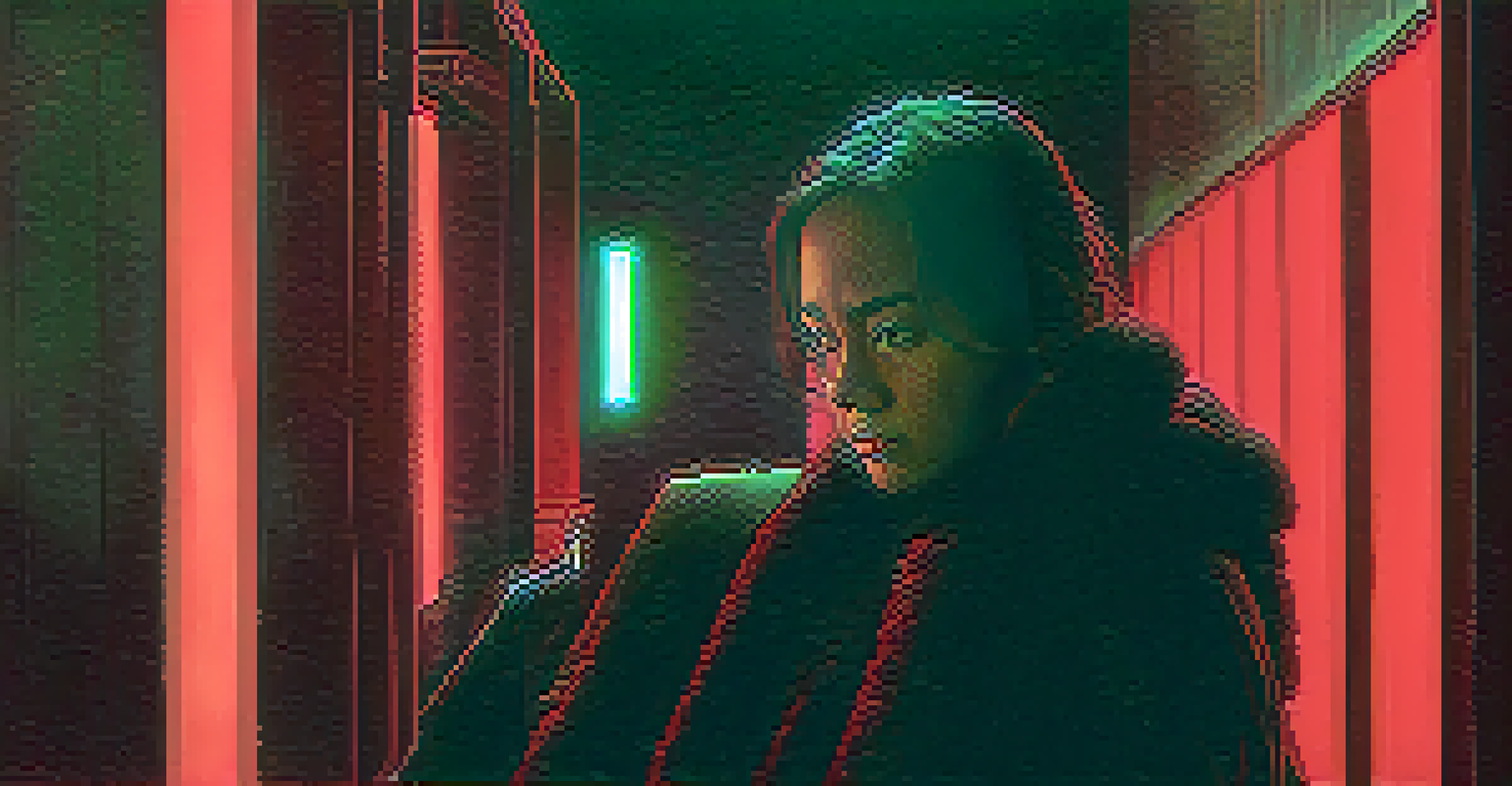Character Development Through Color Schemes in Modern Films

The Power of Color in Cinematic Storytelling
Color is not just a visual element in films; it serves as a vital storytelling tool. Filmmakers use color schemes to evoke emotions and convey character traits, often without a single word being spoken. For instance, a character dressed in dark shades might evoke feelings of mystery or villainy, while bright colors can suggest innocence or joy. Understanding this power allows viewers to connect more deeply with the narrative and the characters inhabiting it.
Color is the keyboard, the eyes are the harmonies, the soul is the piano with many strings.
Take, for example, the use of red in many films, which often symbolizes passion, danger, or love. In a scene where a character is engulfed in red lighting, the audience can immediately sense the tension or intensity of that moment. This connection between color and emotion enhances the viewing experience, making it more immersive. The strategic use of color can transform a standard scene into a powerful emotional anchor.
Moreover, color schemes can also reflect a character's journey throughout the film. As characters evolve, their associated colors may change, symbolizing growth or deterioration. This visual representation of character development adds an additional layer of depth to the storytelling, inviting viewers to engage in analysis and interpretation.
Color Psychology: Understanding Emotional Impact
Color psychology plays a significant role in how audiences interpret character actions and motivations. Different colors can evoke specific feelings; for instance, blue often represents calmness or sadness, while yellow is linked to happiness and optimism. By choosing certain colors for particular characters, filmmakers can subtly guide the audience's emotional response, enhancing their understanding of the character's internal struggles.

A classic example comes from the film 'The Sixth Sense,' where the color red signifies the presence of supernatural elements and the turmoil of the main character. Each time red appears, it heightens the tension and foreshadows pivotal moments. This deliberate decision reinforces the emotional weight of the story, showcasing how color can serve as an effective narrative device.
Color Enhances Emotional Connection
Filmmakers use color to evoke emotions and deepen viewers' connections to characters and narratives.
Additionally, viewers often associate colors with cultural meanings that can amplify emotional responses. For instance, in Western cultures, white is often linked to purity, while in some Eastern cultures, it may symbolize mourning. This cultural context enriches the viewing experience, as audiences bring their interpretations based on their own backgrounds, further enhancing the impact of color in character portrayal.
Symbolism of Colors in Character Arcs
Colors often symbolize significant themes related to character arcs. For example, a character might start the film wearing muted or monochromatic colors, reflecting their emotional state or lack of agency. As their journey unfolds, a shift to vibrant colors can signify newfound confidence and growth. This visual transition not only highlights character development but also reinforces the themes of the narrative.
Colors are the smiles of nature.
In 'Black Swan,' the transformation of Natalie Portman's character is vividly illustrated through her costume colors. Initially, she wears white, symbolizing innocence and fragility. As she embraces her darker side, we see her adorned in black, representing her full transformation and internal conflict. This effective use of color allows the audience to visually track the character’s evolution, enhancing the overall storytelling.
Thus, colors become a silent yet powerful language that communicates a character's inner journey. Filmmakers can create a visual narrative that complements the script, making the story more relatable and engaging for the audience. This interplay between color and character development is what makes modern films so rich and layered.
Contrasting Colors to Highlight Character Differences
Filmmakers often use contrasting color schemes to emphasize differences between characters, creating a visual dialogue. This technique can highlight conflicts, rivalries, or alliances within the story. For example, contrasting warm and cool colors can visually separate characters, allowing audiences to immediately sense their opposing traits or motivations.
In 'The Dark Knight,' the contrast between the Joker's vibrant, chaotic colors and Batman's dark, muted palette underscores their ideological differences. This visual distinction not only enhances the narrative tension but also deepens the audience's understanding of each character's psyche. Such deliberate choices make it easier for viewers to grasp complex relationships and themes throughout the film.
Cultural Context Shapes Color Meaning
Different cultures attribute various meanings to colors, influencing audience interpretations and character portrayals.
Moreover, this approach can also serve to create empathy or disdain toward characters. When a protagonist is depicted in softer, warmer colors and the antagonist in harsh, cold tones, the audience is naturally inclined to root for the hero. This strategic use of contrast not only simplifies character dynamics but also enriches the overall viewing experience.
The Role of Color in Genre Differentiation
Color schemes often help define genre conventions and expectations in modern films. For instance, horror films frequently utilize dark colors and stark contrasts to create an unsettling atmosphere. In contrast, romantic comedies typically embrace bright, cheerful colors to evoke lightheartedness and joy. These color choices not only set the tone but also prepare the audience for the type of emotional journey they are about to undertake.
In animated films, color plays an even more pronounced role in genre differentiation. For example, Pixar films often use vibrant, saturated colors to create a sense of wonder and adventure, appealing to both children and adults. This strategic use of color not only attracts viewers but also reinforces the themes of the film, making the experience more memorable.
By understanding the relationship between color and genre, audiences can better appreciate the artistic choices made by filmmakers. The colors on screen are not just for aesthetics; they serve as vital cues that guide viewers through the story. This connection between color and genre highlights the thoughtfulness behind cinematic storytelling.
Color as a Reflection of Cultural Context
Cultural context greatly influences the use of color in films, adding layers of meaning to character development. Different cultures attribute various meanings to colors, which can affect how audiences interpret a character's actions. For instance, in some cultures, red symbolizes good fortune, while in others, it may represent danger or aggression. Filmmakers must navigate these cultural nuances to ensure their color choices resonate positively with their audience.
In films like 'Crouching Tiger, Hidden Dragon,' the use of color is deeply rooted in Chinese culture, where specific colors carry significant meanings. The vibrant greens, reds, and golds seen throughout the film reflect themes of love, nature, and prosperity, enhancing the viewer's connection to the characters' journeys. This cultural richness adds depth to the narrative, making it more relatable to audiences familiar with these associations.
Dynamic Colors Reflect Character Growth
As technology evolves, filmmakers are increasingly using dynamic color shifts to depict characters' emotional states and transformations.
By incorporating culturally significant colors, filmmakers can create a more immersive experience that celebrates diversity. It encourages viewers to explore the characters' backgrounds and motivations through a culturally-informed lens. This connection not only elevates the film's emotional impact but also fosters greater understanding and appreciation for different cultures.
Future Trends in Color Schemes for Character Development
As technology advances, filmmakers are exploring new ways to utilize color schemes for character development. With the rise of digital effects and enhanced cinematography, color palettes can be manipulated in more sophisticated ways than ever before. This allows for greater creativity in portraying character emotions and growth, pushing the boundaries of traditional storytelling.
One emerging trend is the use of dynamic color shifts within scenes to reflect a character's changing emotional state. This technique can create a more immersive experience, as viewers can visually perceive a character’s inner turmoil or joy in real time. Such innovations may lead to a future where color becomes an even more integral part of character narratives, providing fresh ways for audiences to connect with the story.

Additionally, as global audiences continue to expand, filmmakers are becoming more attuned to the cultural meanings of color. This awareness will likely lead to more nuanced and diverse color schemes that reflect a broader range of perspectives. As we look ahead, it’s clear that color will remain a vital tool for character development, enriching the cinematic experience for years to come.